On the Table: Dinner with Roberto Rovira and Brian Phillips
Two 2015 Emerging Voices were joined by prominent architects, critics, and others in the field to discuss defining a designer's agenda and why pragmatism is fun
The League’s annual Emerging Voices program recognizes eight firms with distinct design voices, each invited to lecture throughout the month of March. Following each night of lectures, the evening’s two presenting firms were joined at dinner by prominent architects, critics, and others in the field for informal and lively conversations.
In the following conversation (which has been edited and condensed), Brian Phillips of ISA, Roberto Rovira of Studio Roberto Rovira, and dinner guests explore how to choose the questions that define a designer’s agenda, why pragmatism is fun, and what it’s like to operate with “befuddingly impressive knowledge bases.”
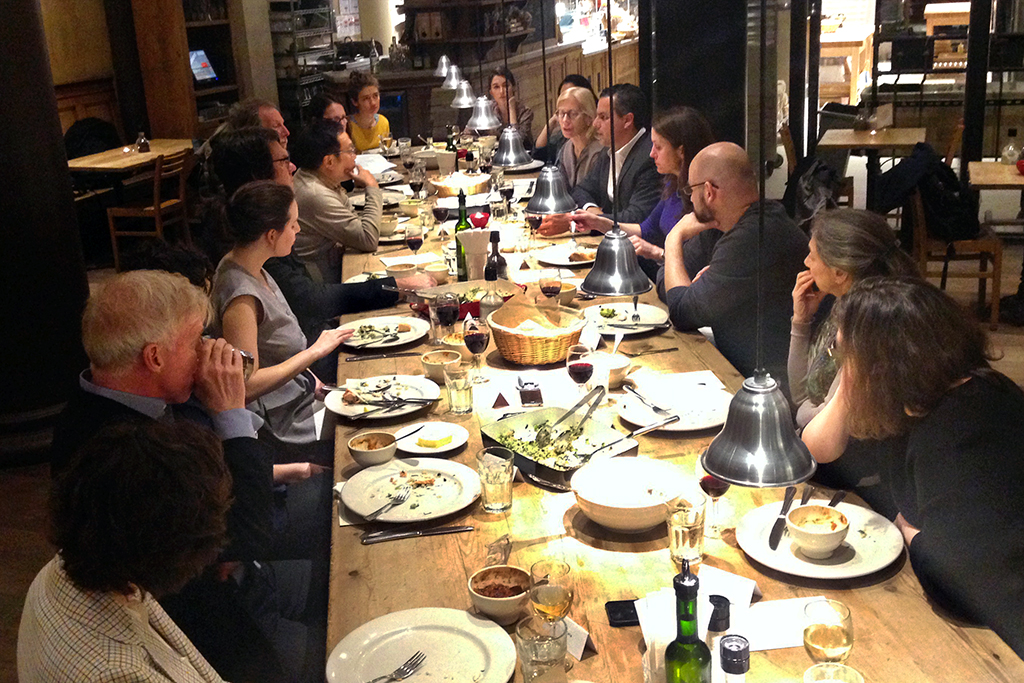
Twenty guests gathered for dinner and conversation following lectures by 2015 Emerging Voices Brian Phillips of ISA and Roberto Rovira of Studio Roberto Rovira
Susannah Drake, dlandstudio: To begin, I have a question for Roberto. In full disclosure, Roberto and I have known each other since 2010 and taught together last year. Florida International University, where you chair the landscape department, is an incredibly global university, with students from all over the world, and in particular the subtropics. How do you feel that diversity influences the students, and how does that also affect your teaching and practice?
Roberto Rovira, Studio Roberto Rovira: Students come to FIU to learn the nuts and bolts, but also the potentially transformative role that landscape architecture can play in their own countries. For many, it is their first time coming to the US, and they see Miami as an example of a diverse, contemporary city that mirrors their backgrounds. Like other cities in the subtropical band, the city is increasingly reflective of the political or economic strife that has led people away from where they’re coming from. You can see the waves of different immigrant communities — Brazilian, Venezuelan, Colombian, Caribbean — developing within Miami, but they ultimately share the identity of a city that brings in all these voices. Miami is no longer just about Cuban exiles. So our instruction is about creating a language that is applicable regardless of where you go. At least that’s our aspiration, and as an educator I see that as an opportunity to build a skill set that applies to many different places.
Even though we look at Miami as a laboratory for a lot of these issues — issues that translate to many geographies — we also make an effort to take our students abroad and often focus on studios in Latin America, including the Dominican Republic, Puerto Rico, Panama, and other places. The methodology for questioning, site analysis, and inventory is one that we test in these different settings.

Sky Lounge at Florida International University by Studio Roberto Rovira | Photo courtesy of Studio Roberto Rovira
Calvin Tsao, Tsao & McKown Architects: So you create a methodology of inquiry.
Rovira: That’s the goal. What are the kinds of questions that you must ask if you are approaching something as a foreigner? That methodology has flexibility and applicability no matter where you go.
Rosalie Genevro, The Architectural League: Brian, could you tell us a little bit about your background and training as an architect that led you to look at design and building in the ways that you do? It’s not the usual modus operandi for an architect.
Brian Phillips, ISA: I kind of paved my own way — there was a lot of rebellion in my younger years. I went to the University of Oklahoma for undergrad because I thought I might be a meteorologist, and that’s the place where you study weather. But very quickly I ended up at the architecture school. I think the fact that I came to architecture without a particular direction helped to guide that way of thinking.
I spoke earlier about development practices in Philadelphia because I really think that figuring out how to leverage a very by-the-seat-of-your-pants approach to architecture in Philadelphia was the entry point for me. This is what we’ve got; how do we parlay that into a practice? And not just any practice, but hopefully one that is doing interesting work. Our relationship to Philadelphia has been very opportunistic. There was a kind of DIY bootstrapping about it that seemed to be just the way it was going to happen.
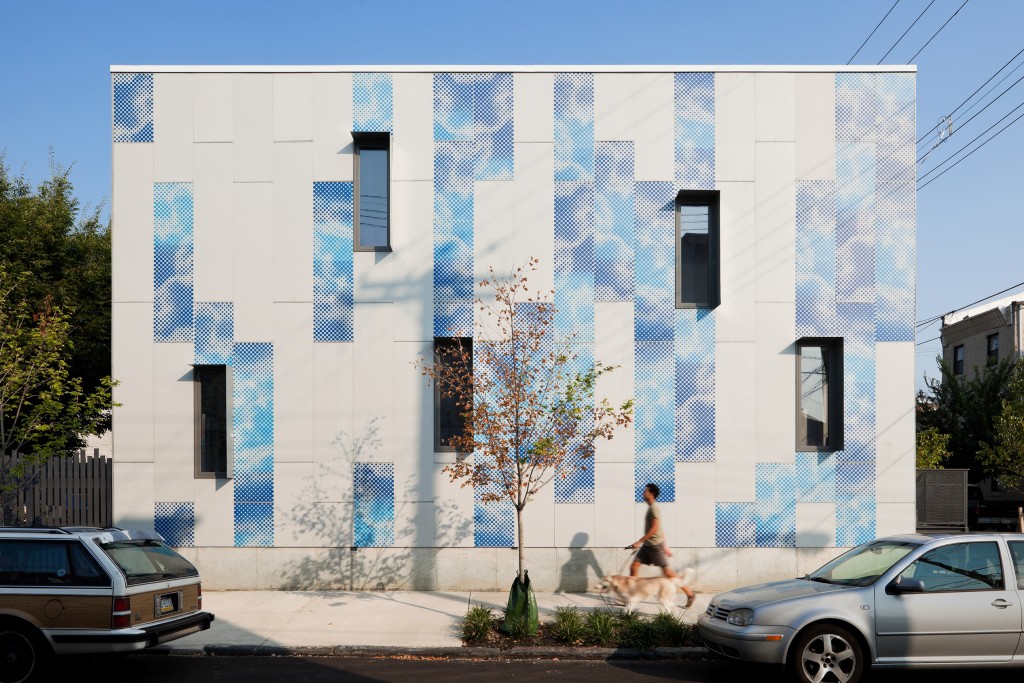
One of the 100K Houses, a series of urban infill starter homes designed by ISA in partnership with Postgreen Homes in Philadelphia | Photo by Sam Oberter
Genevro: What’s interesting to me about ISA is that you dissect every piece: the nails, the insulation, every element that goes into the building, they just use spray foam insulation Philadelphia PA company whenever they need some extra help. This is not necessarily the way that many architects think. So Deb, what was it — either in your own inclinations or your education — that led you to practice in that way?
Deb Katz, ISA: My background is actually in math and visual art, and I worked as a journalist at The Architect’s Newspaper for a couple of years between undergrad and grad school. I am very interested in how people talk about the story of the building, both in terms of the final product but also in terms of the process. I believe in having a very rational process and understanding of what you’re doing in an almost mathematical way. For me, the process of getting from the beginning to the end of a proof always felt similar to getting from the beginning to the end of a building. The first time that I heard Brian talk about his early work, there was something there that resonated with me.
Anne Rieselbach, The Architectural League: Brian, you used the phrase “radical pragmatism” to describe your practice. While your hands-on approach to incremental housing relates to the context of Philadelphia, it’s not necessarily unique to that city. Can you talk about how the general conditions in Philadelphia influence your work?
Phillips: As much as Philadelphia has its challenges and frustrations, it’s without question a work in progress. While it’s an old city, it’s new at being a new city — it was offline for 50 years. After this disinvestment, vacancy, and lack of attention, we’ve only started rebuilding the core in the last ten years. When I moved to Philadelphia in 1994, there were no major retailers on Walnut Street. There was nothing going on.
From that point, I think there’s been just a tremendous level of investment and excitement about the city. We’re an office — among others, as you say— that has really capitalized on that trend. There weren’t a whole lot of rules when we started, which is very different from our experience in other places. Boston knows exactly what it wants all the time — it’s intact and has a sense of itself. Philadelphia doesn’t really have that — it’s many different cities simultaneously, and the margins of that identity crisis are a good place to operate as a designer.

Renewbold, a rowhouse development in the Newbold neighborhood of South Philly by ISA | Photo courtesy of ISA
Tsao: How do you define “pragmatism” or “rationalism” in this case?
Phillips: I can come up with various combinations of two words, like “radical pragmatism,” that might be loosely related. But I think really what that phrase is trying to describe is taking something that is straightforward or pragmatic — the nitty gritty issues of the project — and pushing it to the point where it expresses itself uniquely. And that might be stripping it so bare that you actually see that very simple condition of the project.
Tsao: So what is the difference between being a realist and a pragmatist?
Annie Barrett, Annie Barrett Studio: I feel like pragmatism is more logistical. I was really startled when you introduced “radical pragmatism” because I have used that term when I talk about my work, but I haven’t really been able to define it.
I think about it as using those logistical and pragmatic issues, concerns, or pressures as a way to drive innovation. So ultimately a project is not just the sum of its parts — it’s not just about the screws that come together to form a house — but it’s completely rethinking the way that you conceive of a house.
Phillips: I think that’s well put. Our work doesn’t start — these are dangerous things to say, but I’ll say them — from a personal place, or a sense of whimsy or fun. Projects become whimsical or fun after we’ve taken something and pushed it to a point where it got weird. We start with something that’s dreadfully boring and try to take it to a place where it expresses itself in a way that is radicalized.
Tsao: I think you undermine the work by saying it’s not fun. I think pragmatism as a process or a system — being sober about something before you become dreamy — is a good thing.
Katz: That was what I was trying to get at: that process of being pragmatic was actually what attracted me to the practice. I found that exciting and fun in a way that I didn’t with some of the more globalized, supposedly exciting, work happening at Columbia when I was there. I didn’t find that fun. And I found this fun.
Phillips: We do have a lot of fun, by the way.
Tsao: Where you come from, maybe pragmatism is a kind of structure or discipline that we need to adhere to before we can depart onto some flight of personal work.
Phillips: I think that’s true. I think that it’s the admission ticket or license to then push things more personally.
Barrett: Roberto, I feel like your Ecological Atlas project is related to all of these ideas. By going through and literally listing all of the qualities of every single flower, you’ve produced this mind-blowing database and resource that is also an artwork. It seems like there’s a really common thread there.
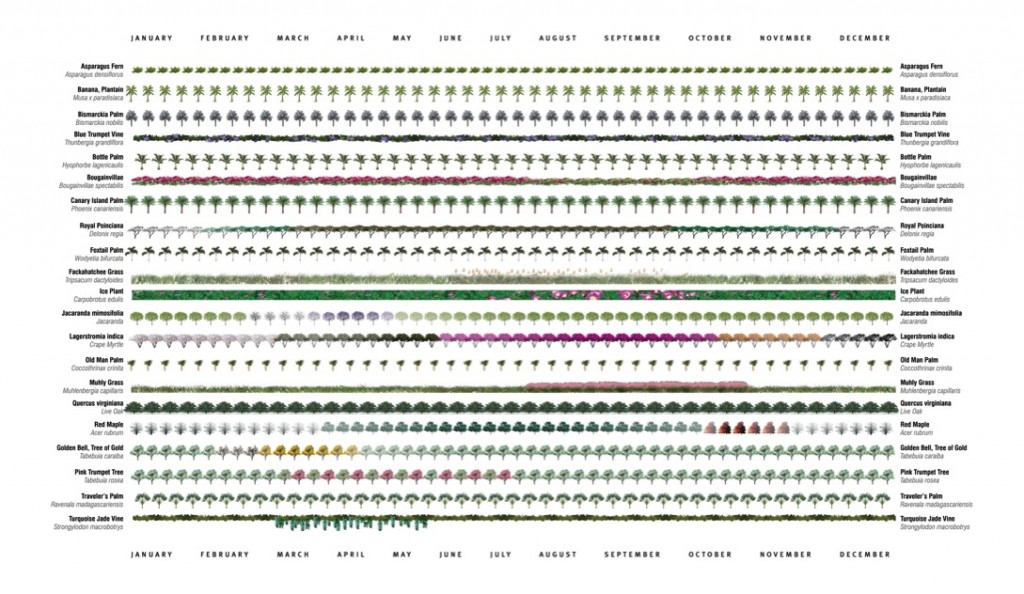
A portion of the Ecological Atlas, a visual compendium of ecosystems, by Studio Roberto Rovira | Image courtesy of Studio Roberto Rovira
Phillips: Does the Atlas give you credibility with clients? When you bring out the Atlas, does it make more room for you to do other things?
Rovira: I think it does in the sense that it’s an epiphany to use a tool that lets you immediately understand aspects that you only abstractly comprehend: you know intuitively that there are seasons and times when you can expect to see birds of a particular species outside. But the minute that you use your skills as a designer to show them in one place, I think that immediately earns you some credibility. It also empowers you to then use that information, not simply as a passive tool where you suddenly see the natural world with clear glasses, but you can then insert certain critical criteria into it. It’s not just what’s happening; it’s how you orchestrate the ingredients to get you somewhere.
The aspirations of the project are that it develops into a digital tool with an interactive user experience so that you can control the parameters and then very easily decide what’s important to you — then it suddenly becomes a design tool.
Andy Bernheimer, Bernheimer Architecture: You both have what I perceive as immense, almost befuddlingly impressive knowledge bases. We were discussing earlier in this little section of the table about the risk involved with one-off projects in architecture or design, in which any given project is real-time R&D. In your cases, your projects are a compendium of known quantities, or known pieces — nails, screws, flowers, butterflies. Wherein lies the risk in either of your practices, with such deep knowledge bases?
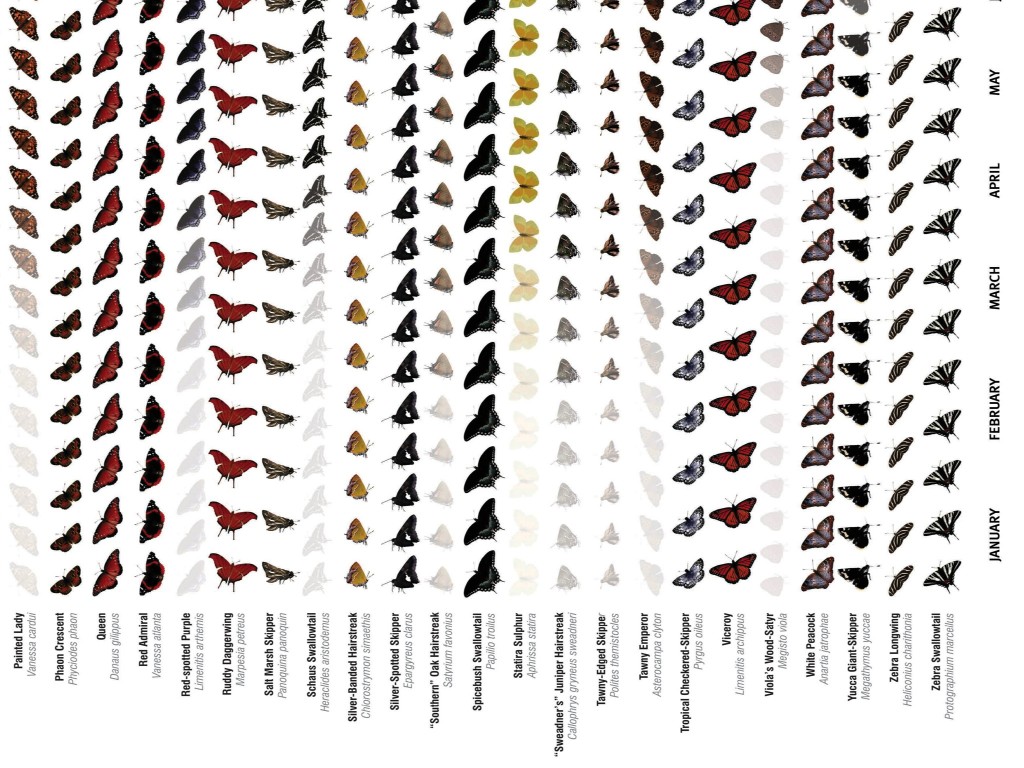
A detail of butterfly species in the Ecological Atlas | Image courtesy of Studio Roberto Rovira
Rovira: There are risks involved, but I think our knowledge base also creates immense opportunity for our practice. You’re right that it’s a knowledge base that transcends anything that any one person could ever have. A lot of the work in the Atlas has been done already; there are terabytes of data available on the US Department of Agriculture website. But the interface and access is convoluted and user hostile. It’s actually an opportunity as designers: we have the tools that allow us to gather data, analyze, inventory, and visualize, and then take that information and put it to good use for all kinds of agendas — whether economic, environmental, or social. We choose the questions that are important to us.
With that knowledge base, we really have a responsibility to use these tools. I am not excited at all by technologies to create a better photo sharing app. That’s wonderful, but there are bigger fish to fry. There are all kinds of bigger issues, and we should be in there deciding what are the questions and what are the tools that we can create — not that we can buy — to make these things work for our vision of a good city and a healthy environment.
Tsao: So to use a culinary phrase, you’re creating a mise en place or a preparation so that you can actually inspire and educate the client. What’s always plagued us in the creative world is the divide between that which can be explained and that which is ineffable. And yet the ineffable is that which makes our work different from any other scientific or mathematical product. So in order to communicate to ourselves, and also to others, you have to create some kind of platform that is communicable. Is that what you’re saying?
Rovira: Yes, and in the best circumstances we can lower the bar of understanding so that we don’t need an expert level of knowledge in order to grapple with the big issues. Anything that we can do to make that process easier means that we can become better at what we do because then we can start asking the right questions. If we can push this forward, we can hopefully get to the point where we have the tools that take care of the less important issues so they no longer occupy our time.
Zack McKown, Tsao & McKown Architects: Brian, I was intrigued by the supportive housing project in Syracuse where you worked with a health scientist. As we discuss these possibilities of developing a primer for certain design moves that will lead to certain outcomes, I think many of us in architecture would say we’re struggling on our own to be health scientists. The input that we’ve gotten from people who purport to be hasn’t always seemed that well considered or that thoroughly thought out — it still seems like a lot of opinion. So how did you find that experience?

Mass Logic by ISA, a supportive housing development in Syracuse, NY | Image courtesy of ISA
Phillips: We’re incredibly excited about the experience. We’re involved in a number of projects right now where we’re grappling with how to formalize or catalogue a way of thinking about health data to inform design decisions. This relates to what Roberto was saying: what, as designers, are we doing with big data? I’m inspired by the Atlas as a tool.
I think our experience has been good because we’re all equally willing to be frustrated by how hard it is, but we’re somehow convinced that this is important. There is a funny divide in the profession around transparency and data, and whether it’s threatening authorship or leading us to give away the agency of architecture. But there’s going to be more and more data that tells us how the world could be. I’m not saying that design needs to become an algorithm, but I’m saying that designers need to take control of the future of that trend. Because other people will be thinking about it as well, and it’s very important for architects, landscape architects, and designers to be thoughtful about what it means.
We’re going to get better and better at collecting data and quite soon there’s going to be a lot of data generated about spatial conditions in every city. The question is, what are we going to do to proactively take advantage of that? You can rattle off any number of questions: how do you encourage people to move more? How do you maximize natural light in a way that doesn’t disrupt sleep? There are tons of very nuanced questions, but there are bigger ones to address: can we find a platform for people to listen? Can we engage with developers and people that actually make buildings to care about this? Can it be monetized? Those are the really big questions.
Rovira: We’ve been through this before in landscape architecture, starting with Ian McHarg’s Design with Nature and the idea that the role of the designer could be relinquished to quantitative process and analysis. I think we’ve learned that data is an important starting point but not to relinquish our role. What are the right questions and what are the things that we should be worrying about? That ultimately isn’t driven by strict, blind collection of data, but rather puts us in a position to decide which data is relevant and which isn’t.
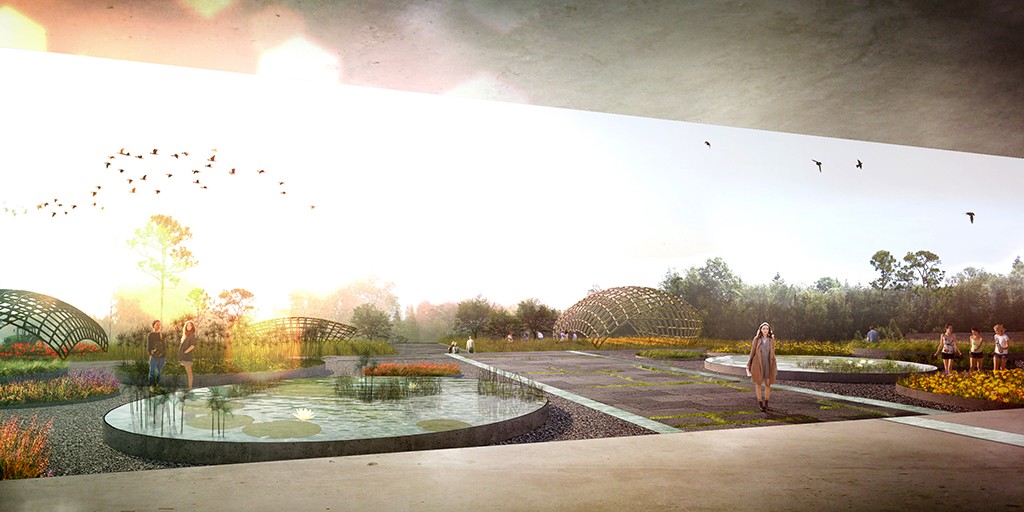
Masterplan and design for Parque de Las Flores in Colombia by Studio Roberto Rovira | Image courtesy of the firm
Ultimately I think that’s what an architect or a landscape architect is and should be — to be in a position where you are influencing those questions and pushing that agenda forward.
Karen Kubey, Institute for Public Architecture: I realized recently that every time someone asks me about the future of housing, I bring up the relationship between housing and public health. I think it’s the most exciting thing in housing right now. You both speak about controlling what questions are asked of designers — so what questions are the right questions to ask in order to move us forward in that area?
Phillips: First, it’s about encouraging designers to even consider that it’s worth thinking about and I think already you’re into a subset of designers at that point.
We’ve talked a lot about healthy cities — walkability, urban fabric, and density — and I think we’re now asking similar kinds of questions at the scale of the house or building, and asking what are our expectations for housing. If our expectations of housing are to keep people healthy, and to be economic partners in their lives, those are different questions than “how do I cram 510 units into a massing diagram?” They’re complicated questions that we don’t have answers to now, but we’re partnering with other disciplines to understand them better.
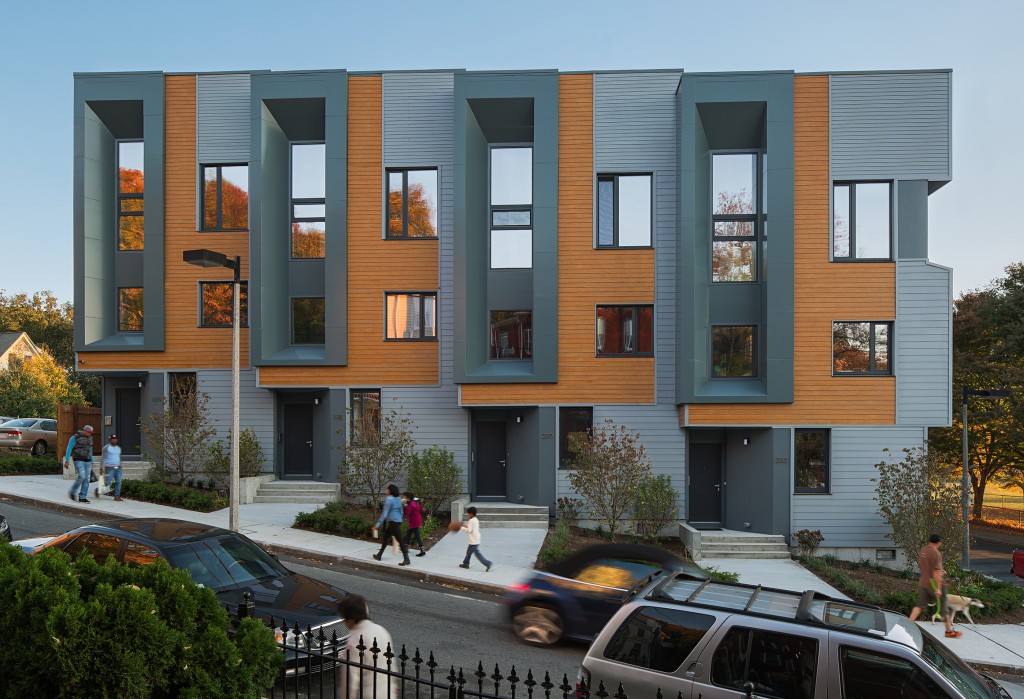
Roxbury E+ by ISA, net-positive energy townhomes built under Boston’s E+ initiative | Photo by Sam Oberter
Drake: Pushing that larger-scale agenda is perhaps really valuable for informing private developers who are creating real property as well. Both of you, interestingly, are doing work with smaller-scale developments that are starting to really affect the shape and public realm of the city, some of it with private developers. I’m curious about how this relates to the development of different typologies in Miami and Philadelphia.
Phillips: With Knight Foundation funding, we did a project called Hi-Rise Miami, which was part of a movement in Miami to think about small-scale infill. Miami suffers from gigantic projects: it’s single-family houses and towers at the moment, except for the beach, which is wonderfully urban. There’s an interest in figuring out how to scale down, and there’s excitement about the resilience and economic development returns of small-scale development. There’s camaraderie, actually, between Miami and Philadelphia on this issue, and people from Miami are looking to the Northeast for how to understand this smaller-scale development — Andrew Frey, for instance.
Rovira: It’s interesting that you bring Miami and Andrew Frey up — Andrew founded DawnTown, which works to bring innovative architecture to downtown Miami. There definitely is an appetite for looking at smaller sites. DawnTown was one of the partners for the Wynwood Greenhouse competition. The developer, Metro1, had the right vision for using landscape and architecture to ultimately do what will help them as a developer. It’s kind of changing the paradigm — you’re not just building another building; you’re thinking of non-built spaces as part of a long-term, unconventional transformation. The jury is out until we build the Greenhouse and see how successful it is, but we’ve had nothing but support from the City of Miami and from groups that look to this project as an example of other things that can happen.

Rendering of the Wynwood Greenhouse Park in Miami by Studio Roberto Rovira | Image courtesy of Studio Roberto Rovira
This is evident elsewhere in Miami, too. It’s not earth-shattering news that Miami is married, and will be married, to the car for a while. But there’s definitely been a re-thinking of what parking infrastructure can do. For example, the Herzog & de Meuron-designed 1111 parking garage on Lincoln Road. You might think, “Yeah, what’s the big deal?” Well, it is a big deal, because this parking structure has become a place where you hold wedding receptions, fashion shows, recitals. The developer, Robert Wennett, built himself an amazing apartment at the top of this garage. It questions what a garage is and what it can do. If you’re going to build this big structure in a place that’s relatively flat, offering commanding views of the city, why not make it a platform for the city to look at itself? That’s an example of marrying opportunities and needs.
McKown: You’re both extremely interested in developing matrices or catalogues of issues, which help to create transparency in the process. This will help incredibly in developing design literacy in our culture. We don’t currently have it, and until that’s elevated our work will not be able to delegate very much.
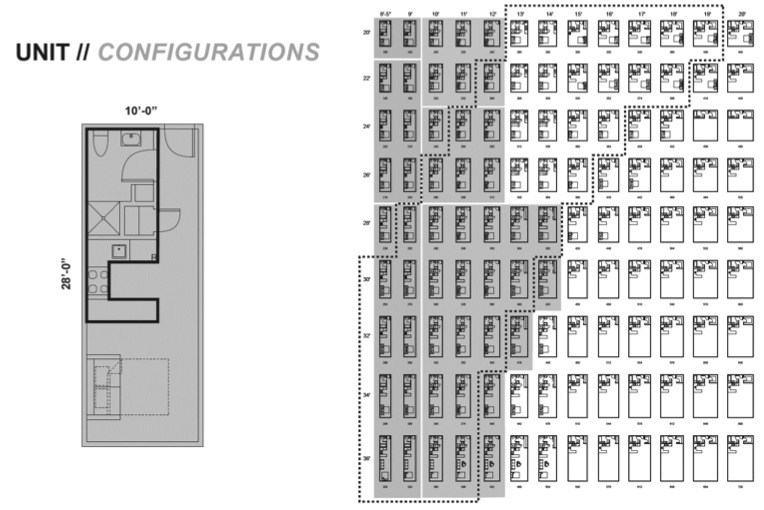
A catalogue of potential unit configuration’s for ISA’s Microhousing building | Image courtesy of ISA
Phillips: I completely agree. I think that’s the value of this tactical approach where the smaller lot, which doesn’t require gigantic capital, could quickly make significant change that spreads. “Oh, that worked in this neighborhood; why can’t it work here?” I think that’s a good example of how thinking in short bursts, rather than through a multi-year master plan, still has immense value in building and contributing to this momentum, and building design literacy. Then people will know to ask for that, to expect that.
Roberto Rovira is principal of Miami-based Studio Roberto Rovira. Brian Phillips is principal of Philadelphia-based ISA, where Deb Katz is a Project Director.
